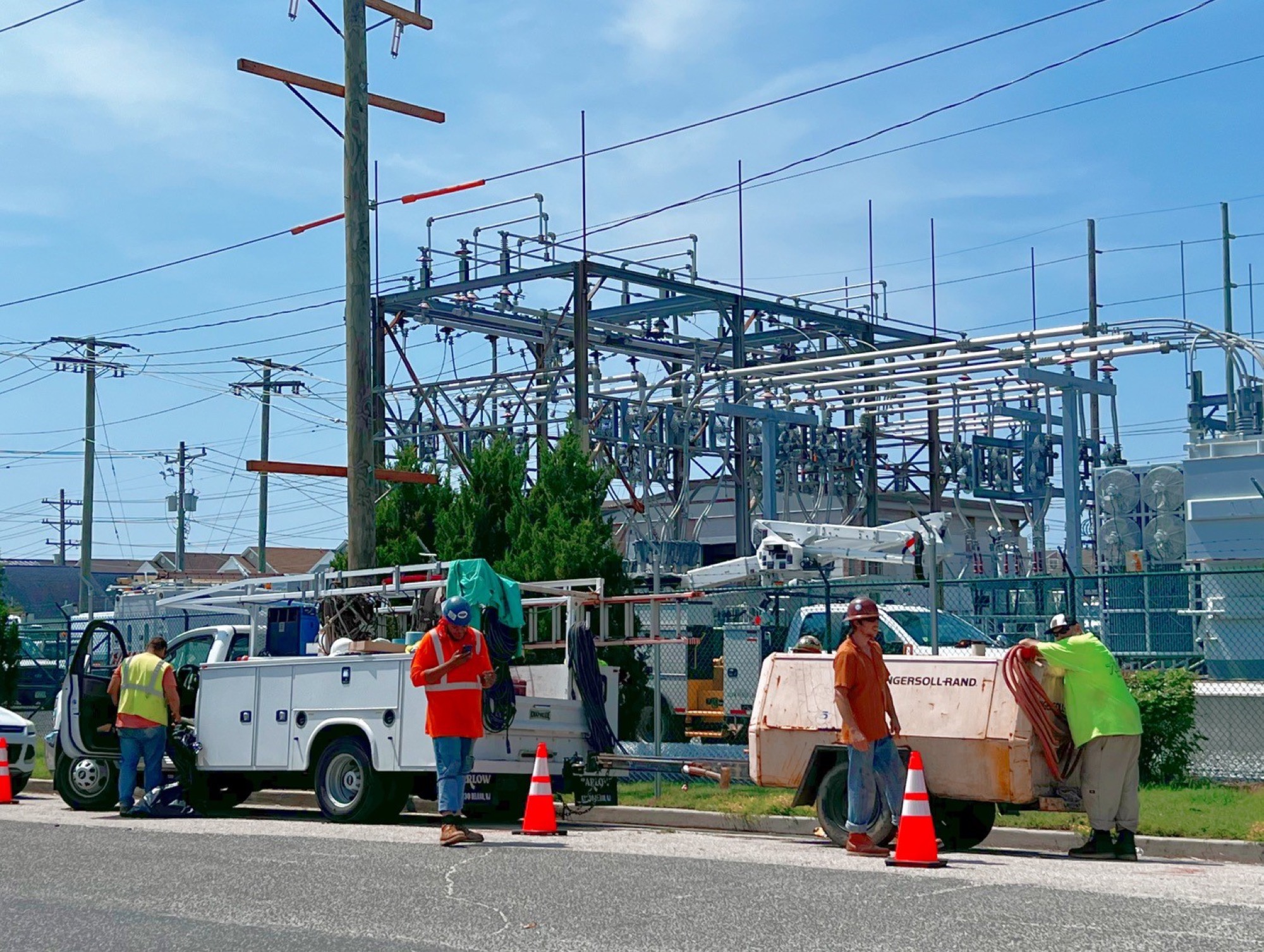Rising electricity prices are of great concern across Cape May County. Its congressional and state representatives have called for hearings by the state Board of Public Utilities and by the Legislature. Readers have written the Herald with stories of significant increases in their monthly bills from Atlantic City Electric.
A Villas woman who declined to be named wrote that she moved to her small home two years ago. Part of her diligence when purchasing the home was a review of past utility bills. All was fine, she said, until her new smart meter was installed, after which, she says, her bills nearly tripled.
She recounts having Atlantic City Electric personnel out to her home on three occasions. Each time they told her that her meter was fine. On one visit they indicated her refrigerator was old. On another they reminded her that it has been a warmer summer.
She says that nothing adds up. Her lifestyle has not changed. She installed a new, energy-efficient heating and cooling system. Nothing else has changed, except her bills. In August 2023, she says, she paid $130; this past August, that became $300.
A 130% increase in her bill from August to August is not explained by the 20% rise in rates that Atlantic City Electric says was implemented since 2023. Nor is it explained by the on-average 2-degree difference in temperature over that period.
Another reader, who also declined to be named, had a bill for July 2024 for $379. That amount was the result of a budget payment plan with ACE, a plan calculated by ACE for the customer with the intent of allowing for predictable monthly billing.
In August, with what this reader says was no notice that the budget plan was being adjusted or that the previous plan was significantly off the mark, the budget plan monthly billing amount changed to $524, a 38% increase that will be on a recurring basis as the new budget amount for the next year.
Rep. Jeff Van Drew (R-2) says his office has heard from thousands of ratepayers who say their bills have doubled or even tripled.
In an interview, the Herald asked Atlantic City Electric why so many people are saying that their bills have soared well beyond amounts that could be explained by the 20% rate hike the company acknowledges occurred in the last year.
The bill and its components
In the interview, with ACE’s Amber Perry, vice president of regulatory strategy and services, Perry said the company is aware of the hardship that rising rates can present for its customers and is taking steps to help customers understand why many residential bills are rising.

Perry explained that the residential bill is impacted by four areas of expense, only two of which are actually generated by and paid directly to ACE.
The supply charges for electricity are set at auctions and approved by the state BPU. They are part of the ACE bill as a pass-through from the power generators who were successful bidders at wholesale auctions. Supply is generally 42% of the average residential bill.
Next in size is distribution. It is on average about 34% of the bill, and this is paid directly to ACE. The distribution network is the means through which ACE delivers usable power to a home. Similar to distribution but managed separately is the transmission charge, which is about 14% of the total bill. It also is a direct expense from ACE.
In transmission and distribution, Perry said, the company not only covers its operating expenses but also recoups, with BPU approval, its capital investments in its networks, which improve reliability and resilience.
The final 10% is labeled “other charges” and includes fees. These include a variety of charges that are not self-explanatory. They are listed as a societal benefits charge, an energy efficiency charge, conservation incentive charge and something called the customer charge.
What is happening, Perry explained, is that the supply charge, which is the largest portion of the bill, is going up at a more rapid rate than other areas at precisely the same time that actual residential use of that supply is also increasing. As she described it, customers are using more electricity for a variety of reasons just as the supply rate for that power from the power generators is also rising.
This does not provide a satisfactory explanation for all the people who say that they are seeing bills double in a year, but it does explain some of the circumstances customers are in. For many there is no predictability to utility charges. Even the reader on the budget payment plan found himself confronted with a sizable adjustment when he was not expecting it.
Perry says the company understands the pain that rising bills may pose for some of the utility’s customers. She reiterates, almost as a mantra, that all customers are different, and all bills are unique. To be sure, there is truth in that statement, but it does not explain the widespread complaints of out-of-control bills.
It is also important to note that ACE has the highest overall rates for electricity among the four utilities that distribute electric power in New Jersey. Each has its own monopoly in a given defined region of the state. While power generation may come from multiple sources, the distribution responsibility is vested in a single entity with a defined geographic area. So why would ACE’s rates be higher?
It is possible that a one-year comparison could skew results based on timing of capital improvements and attempts to recoup those investments. But a five-year look at the change in rates using BPU data showed that ACE’s rate growth was the highest in the state, at 35%, from 2019 to 2024. For the same time period, the rates for PSE&G and RECO rose by 15% and 16%, respectively, while the change for JCP&L was 6%.
The data shows that customers in the three other companies’ service areas have had, for the five years considered, a lower cost-per-kilowatt-hour and have experienced a slower growth in that rate than customers in the ACE service area.
Asked in February about the difference, ACE’s response suggested that a greater degree of infrastructure work may have been undertaken for which the utility sought cost recovery. It also stated that the ratepayers’ protection rests with the fact that the BPU has reviewed and approved all rate increases as reasonable.
Perry did not have the data handy for a detailed response to the five-year figures, but as other company officals had also done in February she pointed to the large investment that ACE has made in its territory, with new substations and, most conspicuously, the large steel transmission poles that provide greater capacity for moving high-voltage electricity and withstand the kinds of Atlantic storms that are expected due to climate change.
Demand vs. supply
In the wide-ranging interview with Perry, the elephant in the room was always soaring demand, which was contrasted with lagging supply. While she put things more delicately, she agreed that the market prices for electricity are responding to growing demand.
On Aug. 1, Exelon, the parent company of ACE, said in a statement that the PJM Interconnection capacity auction for 2025 electricity generation “will likely lead to double-digit rate increases that could be much more significant than any one-year increase experienced to date.”
If these double-digit rate hikes come about as expected, ratepayers will be hit with them at the beginning of the next summer season in Cape May County. (The PJM Interconnection is a regional transmission organization that covers 13 states, including New Jersey. It coordinates the movement of electricity across the grid for its region.)
Perry said many groups of elected officials, utilities, including ACE, and regulatory boards were all working to head off a major blow to residential power customers. Asked for details, she said she could not talk about these efforts at this time.
The discussion with Perry made clear that soaring demand is already part of our lives. Whether caused by data center expansion with artificial intelligence applications or shifting weather patterns and hotter years or a combination of reasons, the demand curve is not hypothetical, it is real.
The issues now are having a reliable supply to meet that demand, and having a sufficiently hardened grid to handle that supply if it can be generated.
Perry talked briefly about the fact that PJM may have to make more use of its Reliability Must Run policy as a way to maintain plants scheduled for decommissioning. New sources of power from initiatives like offshore wind are being established more slowly than ambitious plans called for.
With all of this, a backlash from ratepayers has begun.
What options does ACE offer?
Perry points to various actions the utility has taken to help customers better understand and cope with increases in their bills. She encourages customers to make use of ACE’s new bill support landing page or to call the utility’s customer care number at 800-833-7476 for a review of their bill and answers to their questions.
Budget billing is also available, and Perry says it may be very useful for those seeking predictability in their monthly budgets. Enrolling in budget billing can be done online at the ACE website or by calling the customer care number above.
This process may be helpful to some and not as predictable as desired for others. The amount is calculated based on the previous 12 months of activity. With rates moving and usage increasing, it is easy to see how budget bill customers can find themselves with a deficit hanging that will eventually have to be paid, as was apparently the case of the budget bill reader mentioned above.
Quick Home Energy Checkup visits were another thing Perry pointed to as an ACE initiative that seeks to inform customers on changes at their home that might save on electricity usage. It is a no-cost program designed to provide customers with ways to better control their energy needs. Customers can call 855-861-0151 for an appointment.
Where are we?
The discussion with Perry reinforced the sense that the problem of runaway residential bills is not likely to be resolved with programs that spread the impact over time or offer income-dependent assistance.
Efforts at electrification as a means of achieving net-zero emissions, data center demand due to growth of artificial intelligence use and cryptocurrency expansion, the growing need for capital investment in grid improvements and the slower-than-expected growth of renewable energy sources all are driving electricity markets to higher levels.
It will take other changes, perhaps as a result of the underway discussions that Perry said she could not discuss, to keep the burden of all this from falling on residential ratepayers.
Contact the reporter, Vince Conti, at vconti@cmcherald.com.








